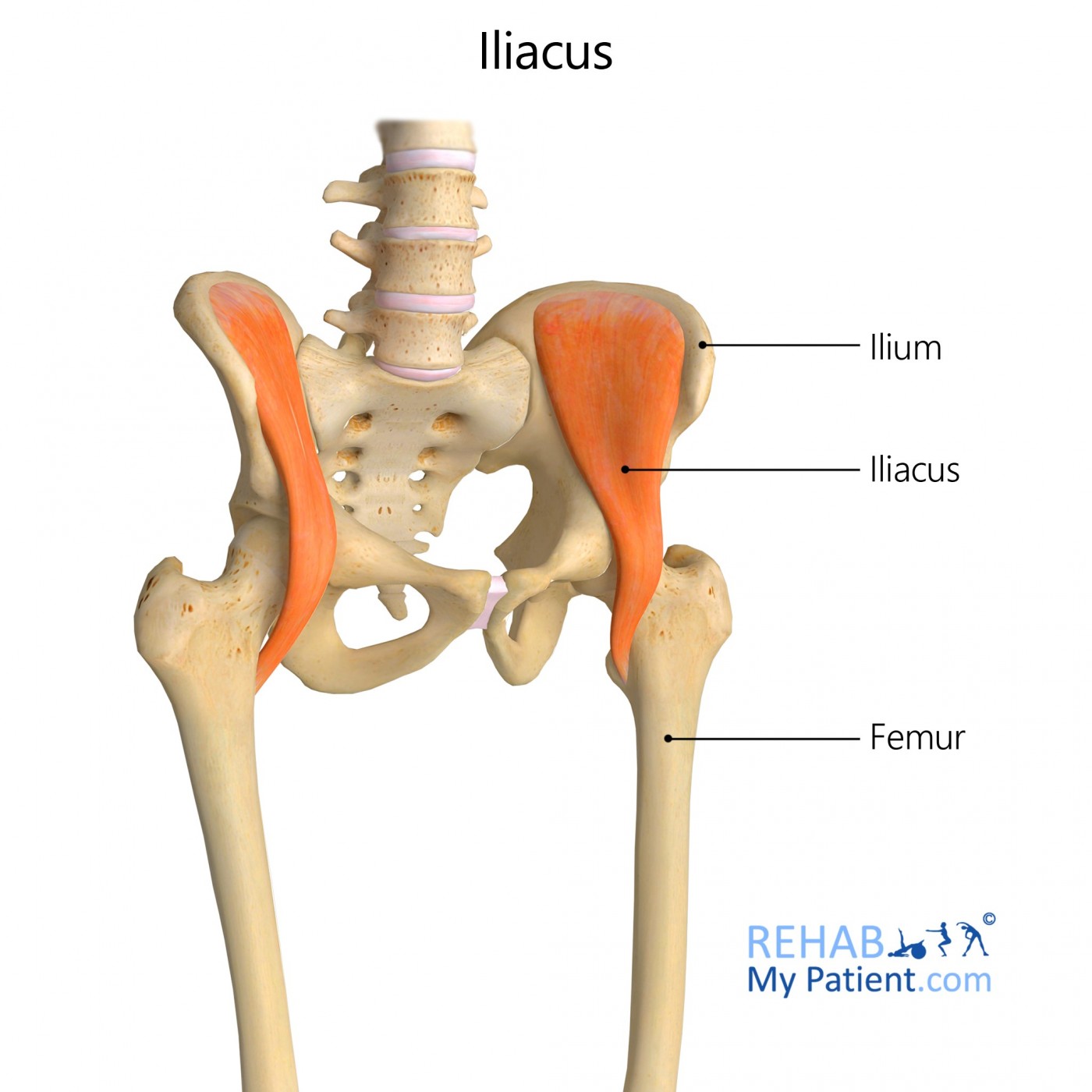Iliacus
Opublikowano dnia 24th Jul 2020 / Opublikowano w: Biodro

General information
Iliacus is a hip joint muscle in the hip flexor group.
Literal meaning
The muscle of the groin.
Interesting information
The iliacus is a large, flat and triangular shaped muscle that fills the iliac fossa in the pelvis. The primary functions of the iliacus are to flex (bend) the thigh and pelvis region in a forward direction.
The iliacus and the psoas muscle are often collectively referred to as the iliopsoas due to the fact that they share an attachment at the lesser trochanter of the femur.
Recurring pain in the lower abdomen, hip, buttocks, lower back, or down the leg that does not appear to respond to conventional treatments may indicate a medical condition known as Iliacus Dysfunction. This condition can have a number of causes including shortening of the muscle over time due to inactivity and lack of appropriate stretching. Once the muscle has adapted to the shortened position, it can be very difficult to return it to the normal lengthened, resting position. Chronic contracture of the muscle is what causes the tell-tale pain and discomfort in sufferers. Treatment of Iliacus Dysfunction generally involves a combination of applied heat, gentle massage, and targeted stretching.
Origin
Iliac fossa
Insertion
Lesser trochanter of the femur
Function
Flexes the hip joint and weakly assists in lateral rotation of the hip.
Nerve supply
Femoral nerve (L2, L3)
Blood supply
Medial femoral circumflex artery and iliolumbar artery

Relevant research
Microsurgery requires the use of muscle flaps. Recent research indicates that iliacus may be used by surgeons as a highly effective free tissue transfer. The iliacus is an ideal muscle flap due to its well-defined pedicle and relatively easy harvesting location which results in few post-operative complications.
Medalie DA, Llull R, Heckler F. (2011). “The iliacus muscle flap: an anatomical and clinical evaluation”. Plast Reconstr Surg. 127(4):1553-60.
Femoral nerve palsy as a result of iliacus hematoma has been widely observed in cases of abnormal blood coagulation including patients taking anticoagulant medications and patients suffering from hemophilia. This case study describes an instance of femoral nerve palsy secondary to iliacus hematoma that resolved spontaneously after two months. This raises the question whether surgical intervention is always necessary to relieve this condition.
Jennifer M. Weiss, MD; Vernon Tolo, MD (2008). “Femoral Nerve Palsy Following Iliacus Hematoma”. Orthopedics, Volume 31, Issue 2.
Iliacus exercises

Stepups can strengthen hip flexion and extension. You should use a sturdy platform for your stepup exercises and the height should be no greater than three feet. Stand facing your platform with your hands on your hips. Place your right foot on top of the platform then raise yourself up and bring your right knee towards your chest. Hold that position for a few seconds then return to the starting position and repeat the same motion on the left leg. Continue alternating legs to complete three sets of twenty. You may take a ten second break in between sets. Dumbbells may be held to increase resistance.
Zapisać się
Zarejestruj się już teraz, aby skorzystać z bezpłatnego okresu próbnego!
Zacznij korzystać z Rehab My Patient już dziś i zrewolucjonizuj proces przepisywania ćwiczeń, aby zapewnić sobie skuteczną rehabilitację.
Rozpocznij 14-dniowy bezpłatny okres próbny